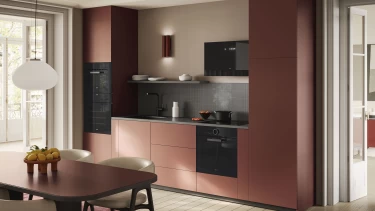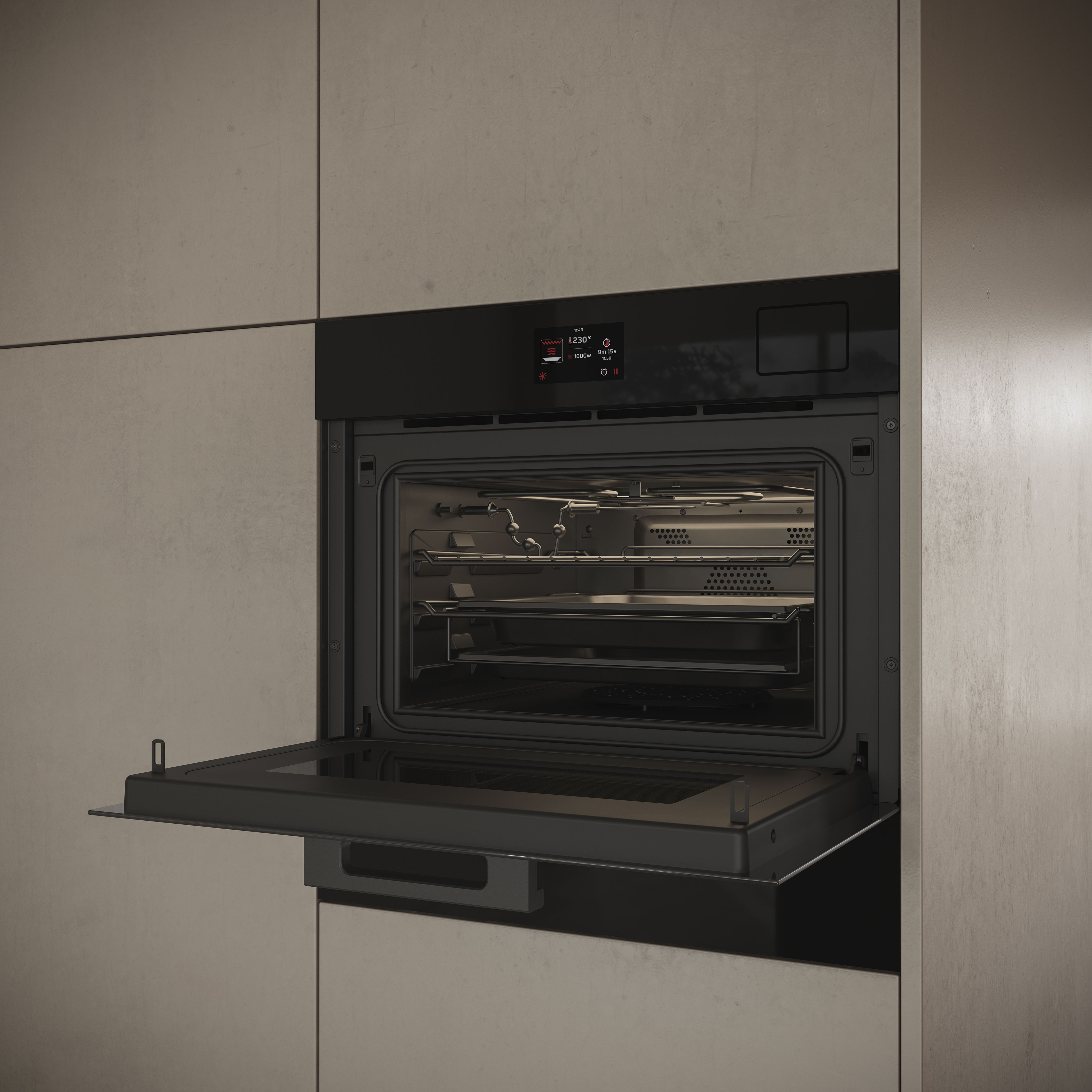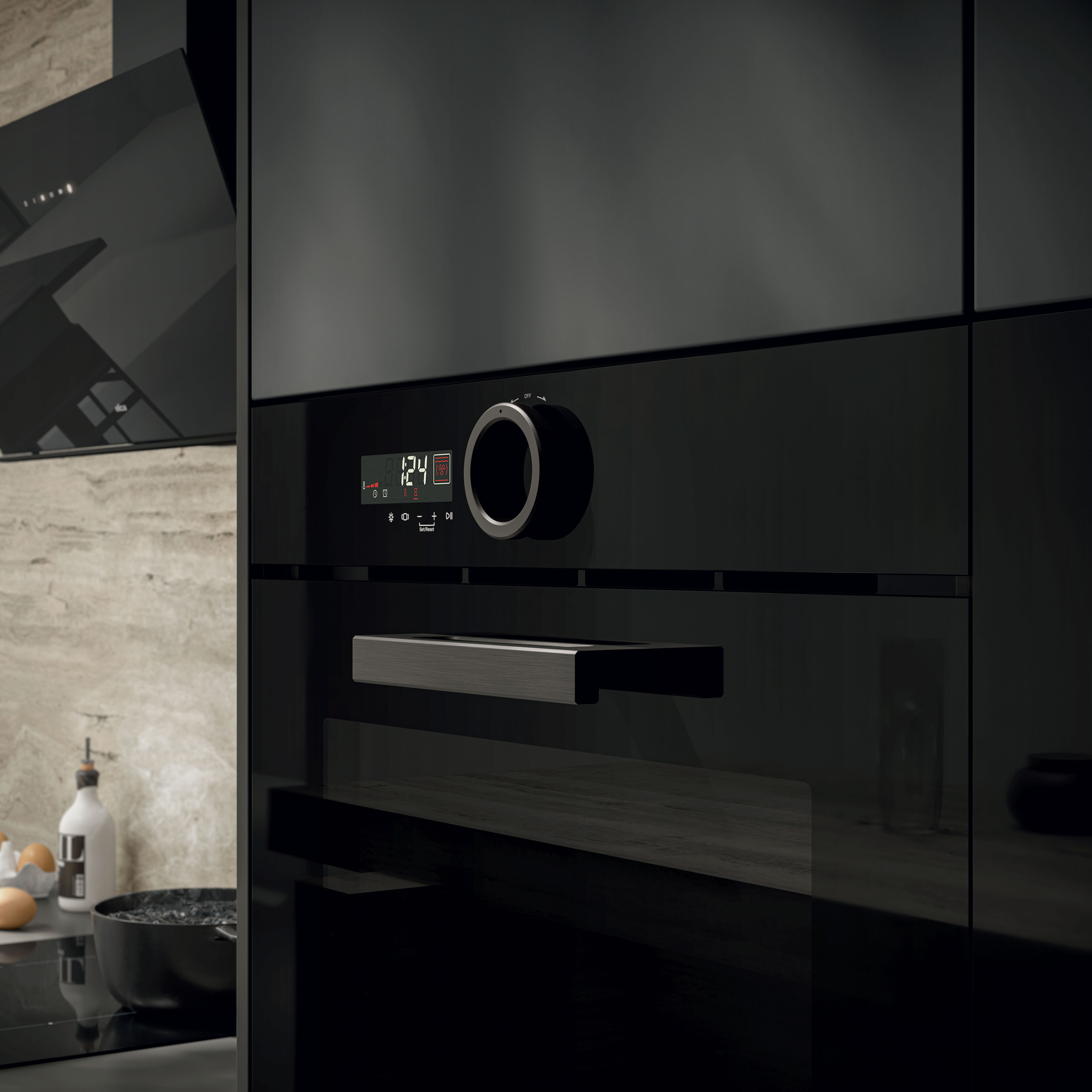
The oven and hob are at the heart of every kitchen. A modern evolution of the traditional hearth, they are an essential appliance for baking and cooking both sweet and savoury dishes. Over the years, ovens have become increasingly high-performance, both in terms of cooking modes, and energy efficiency, with a particular focus on reducing consumption. Among the most popular are built-in ovens, but there are also other models to consider, making this appliance a true must-have in every kitchen.
Built-in or freestanding ovens: what's the difference?
Built-in ovens are integrated into kitchen units. They are usually positioned under the hob, but can also be fitted into an oven cabinet, depending on the available space and kitchen design. Built-in ovens offer a sleek, linear aesthetic that blends perfectly with the other elements of a kitchen. They are the most popular type of oven, available in a wide range of models, that differ in:
-
size: compact, standard or XL
-
cooking functions, from grill to steam cooking
-
self-cleaning and pyrolytic
-
with the option of being combined with a warming drawer
Freestanding ovens, which are not integrated into kitchen units, can be placed wherever one likes but, paradoxically, they are often more challenging to position and much less in demand than built-in models. The selection of free-standing ovens is also more limited, requiring careful research.
Important: Where you can install an oven depends on whether it is electric or gas. Gas ovens must be installed under the hob.
Ovens: sizes and types
If you’re looking to buy a new oven, the first step is to check the available space. Among the various models on the market, the most common sizes (w x h) are:
-
Compact ovens: 60 x 45 cm
-
Standard ovens: 60 x 60 cm
-
XL ovens: 90 x 48 cm
Ovens are also divided into different groups based on cooking mode, and namely:
-
conventional ovens, which have heating elements on the top and bottom of the appliance to cook food
-
convection ovens (also known as fan ovens), which have heating elements plus a fan that circulates hot air throughout the oven, allowing food to cooks faster and evenly
-
steam ovens, equipped with a built-in boiler that produces steam, which is then released into the oven cavity and circulated by a fan
-
grill ovens, equipped with a heating element on the top of the oven that reaches high temperatures to brown food quickly
-
microwave ovens, which emit microwaves that are absorbed by water molecules in food, causing them to vibrate rapidly. This vibration generates heat through friction, which then heats and cooks the food.
Oven types: differences and baking performance
Different ovens perform differently so they deliver different results. For example:
-
a conventional oven requires 20–25° higher temperatures than a convection oven for the same dish. It also takes longer to cook and uses more energy
-
a steam oven allows cooking at lower temperatures, preserving food’s nutritional properties
-
a combi oven lets you combine different methods of cooking; Elica's models ensure excellent cooking results!
Choosing an oven: consumption
It’s no secret: using the oven increases electricity consumption, leading to a higher power bill. Therefore, here’s some things you need to know:
-
a convection oven uses less energy than a conventional oven
-
models are available in energy class A and A+, which use less electricity and have a lower environmental impact
-
ovens use more energy when preheating
-
on average, a class A electric oven consumes around 1 kWh per hour at 200°C
Choosing an oven: how to reduce consumption
Below are a few tips to help you save energy when cooking with an oven.
-
avoid opening the oven door frequently, as this allows heat to escape
-
cook multiple dishes at the same time
-
use oven-safe cookware and bakeware made from heat-retaining materials (such as glass or ceramic)
-
perform routine cleaning and maintenance, check the oven cavity and seals
Choosing an oven: functions
The latest-generation ovens not only combine multiple cooking modes but also offer functions and features that help even beginners achieve excellent results. In Elica ovens, you’ll find:
-
temperature control, even at 320°C (perfect for baking pizza)
-
temperature probe to set and monitor the internal temperature of food
-
humidity control, to achieve drier or juicier dishes
Choosing an oven: options and accessories
In addition to cooking functions, there are other special fittings and features to think about when choosing an oven. Here are some useful ones to consider:
-
sliding guides, which make it easier to insert and remove bakeware
-
cool-touch door, which stays cool even when cooking at high temperatures (ideal when children are in the home)
-
pyrolytic or self-cleaning option, which allows the oven to self-clean
Oven types: final thoughts
As we’ve seen, choosing an oven is not as simple as it might seem. Our advice? Choose a model that combines cooking performance, a well-crafted design, and energy efficiency, helping to reduce pollution and environmental impact.

